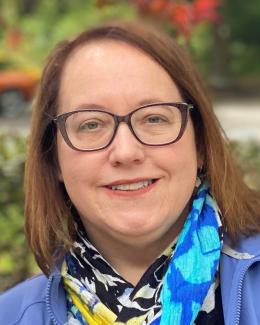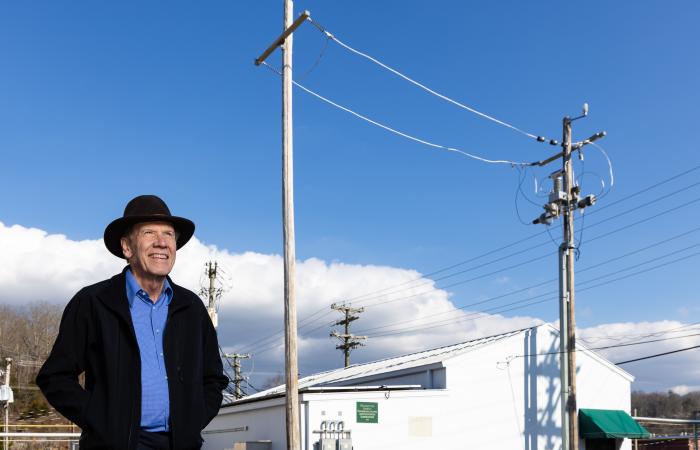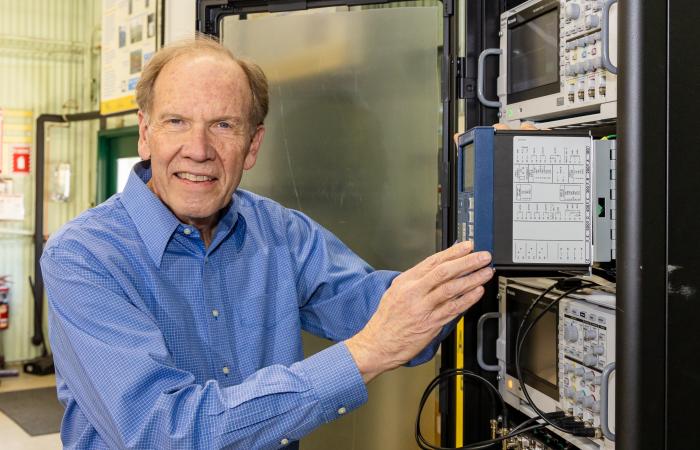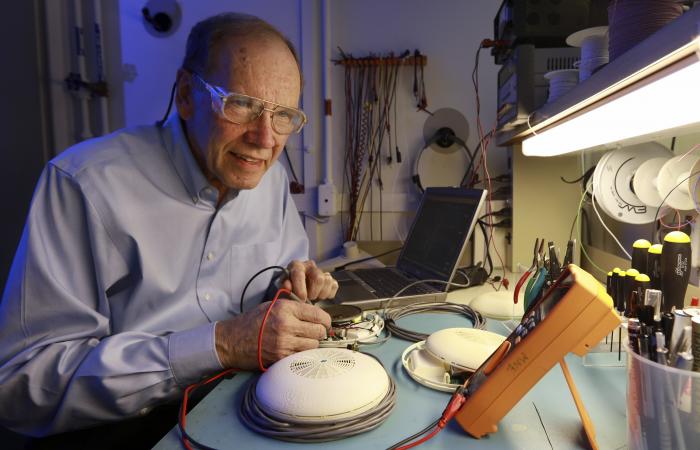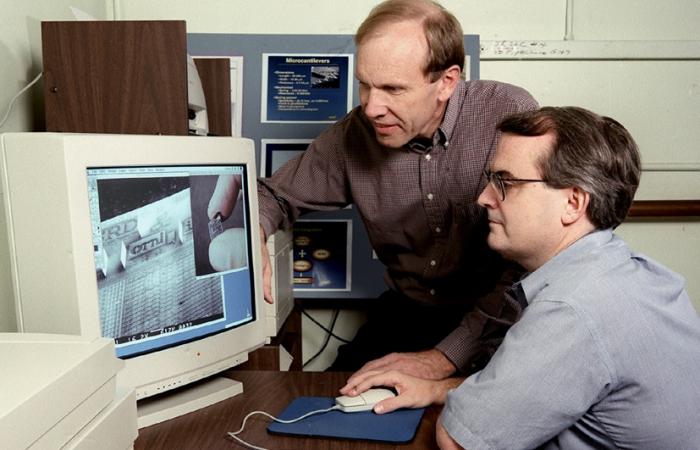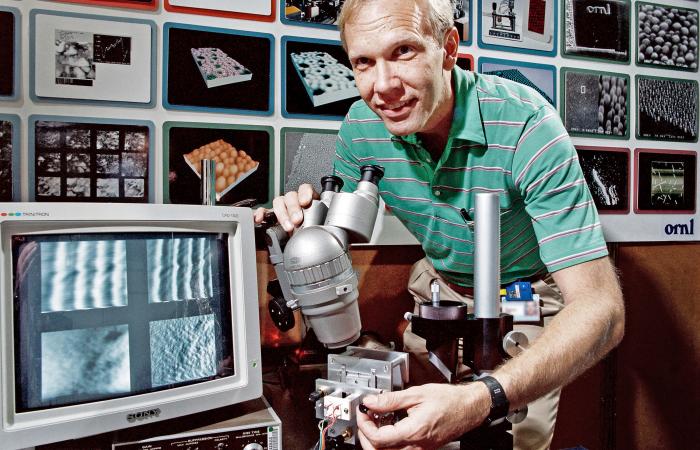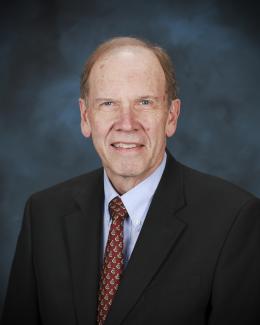Bruce Warmack has been fascinated by science since his mother finally let him have a chemistry set at the age of nine. He’d been pestering her for one since he was six.
“I was a geek from my earliest days,” Warmack says. By the time he was 12, he was ordering all kinds of chemicals, including a pound of sodium that he and a buddy split for their experiments. “We were lucky not to get hurt, but we had great fun watching it sizzle and pop in water.”
Warmack cultivated his interest in math and science through the rest of his school days, up to and including a concentration on physics and engineering at the University of Tennessee, Knoxville. He was a cooperative education student at NASA in Huntsville, Alabama, in the 1960s when the agency was building the Saturn V booster rocket. “I got to operate the first transistorized computer there,” he said. “I had a lot of fun.”
He visited ORNL on a joint project with NASA and later conducted graduate work at the lab on organic superconductors. After earning his doctorate in physics from UTK, he worked as an ORNL postdoctoral researcher in gas-phase physics and was hired in 1978 in the mass spectrometry section.
With nearly 50 years at the lab under his belt, Warmack has no intention of slowing down. His inventions helped build ORNL’s reputation as a world leader in microscopy and sensing technologies, and today he’s busy developing a high-voltage testbed for advanced sensors to support a self-healing national power grid.
Having a direct, positive impact is something Warmack has been eager to cultivate throughout his career. Working as a young staff researcher in the Sub-Micron Physics group, he built one of the world’s first scanning tunneling microscopes. “There were only three in the world then, and today they’re standard equipment,” he said. He was recognized for his biological imaging using such atomic-level microscopes by the American Physical Society, which later named him a fellow.
From microscopy to micro sensors
Warmack then turned to other scanning-probe microscopes, which led to the co-invention of microcantilever sensors, a type of microelectromechanical sensor, or MEMs. These are akin to miniaturized diving boards that are excited by physical or chemical interactions with their environment. These ultra-sensitive devices have been used in many applications from infrared imaging to environmental monitoring.
“We were studying materials and electronics at the nano level before the term nano was invented,” Warmack quipped. He was a group leader at the time, and took an entrepreneurial leave from 2000 to 2002 to work as the director of MEMS development for Graviton, Inc., in California, where he focused on advanced sensor networks.
When he returned to ORNL, Warmack said he had a realization about how he wanted to spend the rest of his career. He no longer wanted to be on the management track and chose to focus on research and development instead.
“I wanted to work and create things that were interesting and useful to other people — to work on a project toward an overall goal,” he said. “Not just making a brick for a building, so to speak, but constructing an enclosure for a grand enterprise.”
His well-known MEMs research attracted the attention of the U.S. Fire Administration, which asked him to work on improvements to smoke detector technology. The federal agency was concerned about a trend at the time: smoke alarms had the tendency to be set off by things like burnt toast too frequently. This prompted homeowners to dismantle and remove the detectors. The Consumer Product Safety Commission conducted a study that found some 1,300 lives a year could be saved by avoiding these “nuisance” alarms.
A smarter smoke alarm
“I didn’t know anything about smoke alarms,” he said. But with lab colleagues like electrical engineer Shane Frank and computer scientist Dennis Wolf, Warmack developed a Smart Smoke Alarm that used algorithms to more accurately identify fires, including much faster detection of smoldering fires, than conventional technology at the time, while at the same time reducing or eliminating nuisance alarms. The technology won an R&D 100 Award and through licensing is incorporated in many smoke detection technologies manufactured today.
More recently, Warmack and ORNL’s Nance Ericson developed a device called the DC Hot Stick, also licensed by industry. The device can be used by first responders to ensure the chassis of electric vehicles involved in a crash are properly discharged before beginning rescue efforts. Warmack has also worked on teams dedicated to a range of projects such as developing high-voltage power supplies for neutron generators and helping develop a fast-opening valve to quench plasma for the international ITER fusion project.
Much of Warmack’s present research is focused on the power grid, devising technology to monitor the flow of electricity and make the system more resilient to disturbances, including cyber- or physical attacks. The high-voltage testbed he has developed at ORNL evaluates new sensor technologies that can monitor for disturbances on higher voltage transmission and distribution systems that are increasingly stressed by the shift toward renewable energy sources.
The testbed is the first of its kind to put grid sensors through their paces on 35-kilovolt and higher systems, measuring their ability to detect and transmit information on disturbances at higher frequencies, as well as their ability to withstand real-world weather conditions.
Using high-quality, intelligent sensors will generate vastly more data than is currently available to grid operators. Warmack is working with colleagues to build a signature library of what different disturbances look like. This data can be used to evaluate sensor performance, inform grid operators of pending outages, and eventually train a neural network to automatically recognize serious threats and respond to them in near real-time. One application would be to detect and deter arcing events on transmission lines in rural areas, which have been blamed for causing wildfires in some parts of the country.
Creating the brick-and-mortar to solve big challenges
Warmack continues to be inspired by what his research is making possible for practical energy systems. “Science is the discovery of new knowledge about materials and the physics of things, but I’ve also enjoyed the engineering in my work,” he said. “It’s the reason I’m still here.”
His advice for young scientists? “Enjoy what you’re doing right now. We’ve been given a really amazing world that supports us and gives us a variety of challenges. Our work here at ORNL puts us in contact with exceptional colleagues and the opportunity to work on a variety of projects.”
He also advises early career researchers not to sweat the small stuff. “There will be managerial and operational problems that come along that tend to be the burrs under our saddles. But there’s nothing new in those problems,” he said. “Always recognize that you’re making a difference — you’re creating the brick and mortar to solve large problems. Don’t focus on the small annoyances so much that you miss that big picture.”
UT-Battelle manages ORNL for the Department of Energy’s Office of Science, the single largest supporter of basic research in the physical sciences in the United States. DOE’s Office of Science is working to address some of the most pressing challenges of our time. For more information, please visit energy.gov/science.
